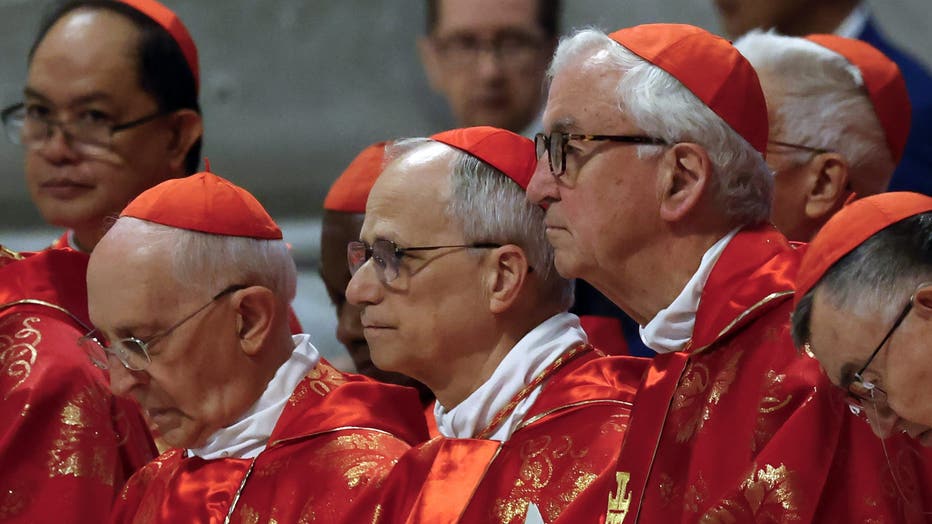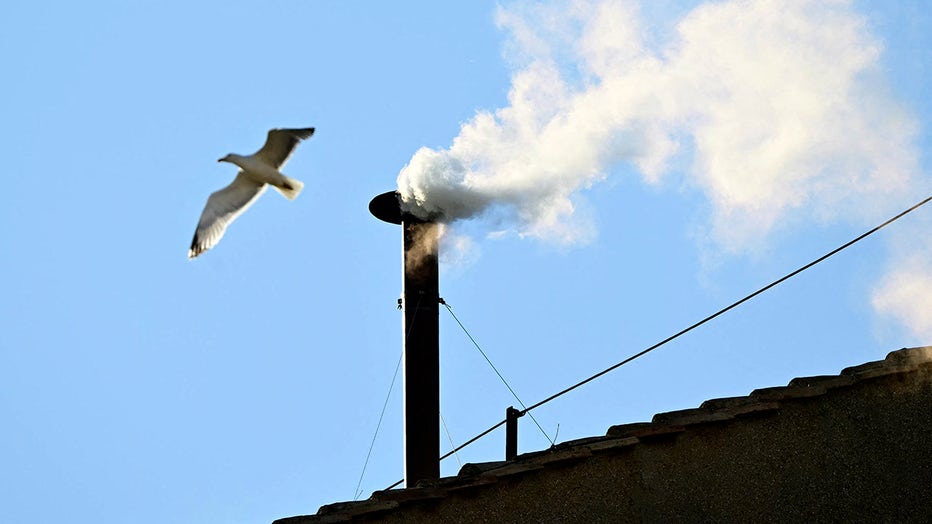
The Brief
-
- White smoke signaled the election of Cardinal Robert Prevost to succeed Pope Francis, who died last month at age 88.
- Prevost, a Chicago native, becomes the first person from the United States to be elected pope.
- He has chosen the name Pope Leo XIV.
VATICAN CITY – The College of Cardinals elected Cardinal Robert Prevost, 69, to become the next leader of the worldwide Catholic Church. He’ll take the name Pope Leo XIV.
Dating for Senior SinglesShare your feelings and emotions with someone.Meetheage|
SponsoredRead More
The news came just over an hour after white smoke finally billowed from the Sistine Chapel late Thursday afternoon, signaling to the world that the papal conclave had chosen a successor to Pope Francis, who died last month.
The papal conclave began Wednesday afternoon and lasted 25 hours, 37 minutes, and 58 seconds, according to a count by LiveNOW from FOX.
It was not immediately clear if the election was after four ballots or five ballots, but either way, it would be in line with recent history. Pope Benedict XVI was elected in 2005 after four ballots in two days while Pope Francis was elected after five ballots in two days in 2013.
RELATED: The pope’s regnal name: What it is and why it matters
javascript:false
Meet the new pope: American Robert Prevost, Pope Leo XIV
A new pope has been named in the Vatican as the 2025 conclave comes to a close. An American Cardinal, from Chicago, Robert Prevost, Pope Leo XIV is the new pope.
Who is Cardinal Robert Prevost?
Biography:
Cardinal Robert Francis Prevost, now Pope Leo XIV, is a Chicago native born in 1955.
After joining the Order of Saint Augustine in 1977 and making his solemn vows in 1981, he earned degrees in mathematics, divinity, and canon law—including a doctorate from the Pontifical College of St. Thomas Aquinas in Rome.

Newly elected Pope Leo XIV, Robert Prevost addresses the crowd on the main central loggia balcony of the St Peter’s Basilica for the first time, after the cardinals ended the conclave, in The Vatican, on May 8, 2025. (Photo by TIZIANA FABI/AFP via Ge
Dig deeper:
Prevost was ordained in 1982 and began his pastoral and academic service in Peru in 1985, where he served in roles such as chancellor, seminary rector, canon law professor, and judicial vicar.
In 1999, Prevost was elected provincial prior of the Augustinians in Chicago, and just a few years later, he became prior general of the worldwide order, serving two terms until 2013.
He then returned to Peru at Pope Francis’ request to serve as apostolic administrator—and later bishop—of the Diocese of Chiclayo.
In January 2023, Pope Francis appointed Prevost prefect of the Dicastery for Bishops, a powerful Vatican role responsible for episcopal appointments worldwide.
He was made a cardinal in September of the same year.
The most recent post on Prevost’s personal X account appears to be a retweet of an opinion piece criticizing the Trump administration’s actions on immigration.

File: Cardinal Robert Francis Prevost (C) is seen during a Pro Eligendo Romano Pontifice Mass ahead of the Conclave, in which he and the other cardinal electors are called to elect a new Pope, at the Vatican on May 7, 2025 (Photo by Riccardo De Luca/
Pope Leo XIV
What’s in a Name?:
Following tradition, Cardinal Prevost chose the regnal name Pope Leo XIV. His reasoning was not immediately clear but it’s an obvious nod to Pope Leo XIII, who was known for his traditional doctrine combined with intellectualism.
First message
What they’re saying:
In his first words, Pope Leo XIV said “Peace be with you.”
From the loggia of St. Peter’s Basilica, he recalled that he was an Augustinian priest, but a Christian above all, and a bishop, “so we can all walk together.”
He spoke in Italian and then switched to Spanish, recalling his many years spent as a missionary and then archbishop of Chiclayo, Peru.
What happened during the conclave?
Short answer: We may never know.
Big picture view:
Initially, papal elections weren’t as secretive, but concerns about political interference soared during the longest conclave in Viterbo. Gregory X decreed that cardinal electors should be locked in seclusion, “cum clave” (with a key), until a new pope was chosen.
The purpose was to create a totally secluded environment where the cardinals could focus on their task, guided by God’s will, without any political interference or distractions. Over the centuries, various popes have modified and reinforced the rules surrounding the conclave, emphasizing the importance of secrecy.

The 133 cardinal-electors enter the Sistine Chapel in solemn procession, beginning the conclave to elect the next and 267th Pope on May 07, 2025 in Vatican City, Vatican. (Photo by Vatican Media via Vatican Pool/Getty Images)
RELATED: How is a new pope chosen? All about the conclave
There were 135 cardinals who are under age 80 and eligible to vote in the conclave, hailing from 71 different countries in the most geographically diverse conclave in history. Two formally told the Holy See that they couldn’t attend for health reasons, bringing the number of men in the Sistine Chapel down to 133.
A two-thirds majority was needed to be elected pope, meaning the winner must secure 89 votes.
All Vatican personnel involved in supporting the upcoming papal conclave must take an oath of secrecy — under penalty of automatic excommunication.

This photograph shows white smoke rising from the chimney of the Sistine Chapel signaling that cardinals elected a new pope during their conclave in the Vatican on May 8, 2025. (Photo by TIZIANA FABI/AFP via Getty Images)
The life and legacy of Pope Francis
The backstory:
Pope Francis died on Easter Monday at the age of 88 after a papacy of 12 years.
Francis died Monday morning at the Domus Santa Marta hotel where he lived at the Vatican. His death came almost a month after he returned there following his treatment in hospital for double pneumonia. The Vatican said Francis died after having a stroke.
Francis was known for his personal simplicity, from the choice of his name Francis in honor of St. Francis of Assisi, who renounced wealth to help the poor, to the outward symbols and priorities of his papacy.
He chose to live in the Vatican hotel instead of the Apostolic Palace and wore his old orthotic shoes and not the red loafers of the papacy.
javascript:false
Pope Francis funeral homily: ‘Pope among the people’
Cardinal Giovanni Battista Re eulogized Pope Francis as a pope of the people, a pastor who knew how to communicate to the “least among us” with an informal, spontaneous style. Re called Francis “a pope among the people, with an open heart towards everyone.”
In his teachings he focused on concern for refugees and other marginalized people. His first trip outside Rome as pope in 2013 was to the Sicilian island of Lampedusa to meet with newly arrived migrants. His plea for welcome put him at odds with U.S. and European policies.
He also signaled a more welcoming stance toward LGBTQ+ people, while also making the fight against climate change a priority. Francis became the first pope to use scientific data in a major teaching document and made care for God’s creation a hallmark of his papacy.




